研究成果

May, 2024
Purpose: To describe the clinical, electrophysiological and genetic spectrum of inherited retinal diseases associated with variants in the PRPH2 gene.
Methods: A total of 241 patients from 168 families across 15 sites in 9 countries with pathogenic or likely pathogenic variants in PRPH2 were included. Records were reviewed for age at symptom onset, visual acuity, full-field ERG, fundus colour photography, fundus autofluorescence (FAF), and SD-OCT. Images were graded into six phenotypes. Statistical analyses were performed to determine genotype-phenotype correlations.
Results: The median age at symptom onset was 40 years (range, 4-78 years). FAF phenotypes included normal (5%), butterfly pattern dystrophy, or vitelliform macular dystrophy (11%), central areolar choroidal dystrophy (28...
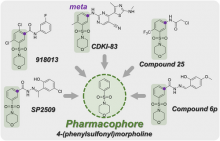
May, 2024
Phenotypic drug discovery (PDD) is an effective drug discovery approach by observation of therapeutic effects on disease phenotypes, especially in complex disease systems. Triple-negative breast cancer (TNBC) is composed of several complex disease features, including high tumor heterogeneity, high invasive and metastatic potential, and a lack of effective therapeutic targets. Therefore, identifying effective and novel agents through PDD is a current trend in TNBC drug development. In this study, 23 novel small molecules were synthesized using 4-(phenylsulfonyl)morpholine as a pharmacophore. Among these derivatives, GL24 (4m) exhibited the lowest half-maximal inhibitory concentration value (0.90 µM) in MDA-MB-231 cells. To investigate the tumor-suppressive mechanisms of GL24,...
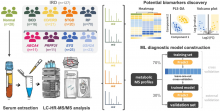
Apr, 2024
The diagnosis of inherited retinal degeneration (IRD) is challenging owing to its phenotypic and genotypic complexity. Clinical information is important before a genetic diagnosis is made. Metabolomics studies the entire picture of bioproducts, which are determined using genetic codes and biological reactions. We demonstrated that the common diagnoses of IRD, including retinitis pigmentosa (RP), cone-rod dystrophy (CRD), Stargardt disease (STGD), and Bietti's crystalline dystrophy (BCD), could be differentiated based on their metabolite heatmaps. Hundreds of metabolites were identified in the volcano plot compared with that of the control group in every IRD except BCD, considered as potential diagnosing markers. The phenotypes of CRD and STGD overlapped but could be differentiated by...
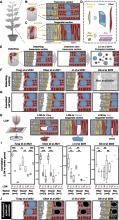
Apr, 2024
Cell type annotation and lineage construction are two of the most critical tasks conducted in the analyses of single-cell RNA sequencing (scRNA-seq). Four recent scRNA-seq studies of differentiating xylem propose four models on differentiating xylem development in Populus. The differences are mostly caused by the use of different strategies for cell type annotation and subsequent lineage interpretation. Here, we emphasize the necessity of using in situ transcriptomes and anatomical information to construct the most plausible xylem development model.
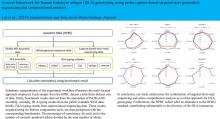
Apr, 2024
Human leukocyte antigen (HLA) genes play pivotal roles in numerous immunological applications. Given the immense number of polymorphisms, achieving accurate high-throughput HLA typing remains challenging. This study aimed to harness the human pan-genome reference consortium (HPRC) resources as a potential benchmark for HLA reference materials. We meticulously annotated specific four field-resolution alleles for 11 HLA genes (HLA-A, -B, -C, -DPA1, -DPB1, -DQA1, -DQB1, -DRB1, -DRB3, -DRB4 and -DRB5) from 44 high-quality HPRC personal genome assemblies. For sequencing, we crafted HLA-specific probes and conducted capture-based targeted sequencing of the genomic DNA of the HPRC cohort, ensuring focused and comprehensive coverage of the HLA region of interest. We used publicly available short-...
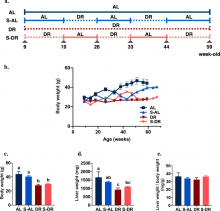
Apr, 2024
Purpose: Weight cycling is a phenomenon characterized by fluctuating body weight that is commonly observed in individuals employing intentional weight loss methods. Despite its prevalence, the impact of weight cycling on health remains equivocal. The current investigation aimed to examine the effects of weight cycling on liver health.
Methods: The weight cycling model was established by switching the feeding method of mice between ad libitum (AL) and restricted intake (DR or 60% of AL) of the breeding diet to cause weight gain and weight loss, respectively. The weight cycling model comprised two and a half cycles, with one group terminating the experience during the weight-gain period (S-AL) and the other during the weight-loss period (S-DR). Liver tissue was collected to investigate...
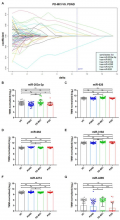
Mar, 2024
The early detection of cognitive decline in Parkinson's disease is important for providing drug therapy and non-pharmacological management. The circulating microRNAs present in plasma are promising biomarkers of PD with dementia (PDD) due to their critical roles in synaptic plasticity and the regulation of neurodegeneration-associated proteins. In this study, we aimed to identify plasma microRNAs that may differentiate PD with or without cognitive impairment. Global microRNA expression was obtained from a discovery set of 123 participants who were divided into four groups, namely normal controls (HC), PD with no dementia (PDND), PD with mild cognitive impairment (PD-MCI), and PDD, using next-generation sequencing. The BOLD selector was used for microRNA candidate selection. Six...
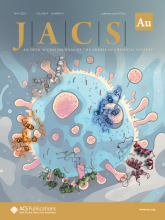
Mar, 2024
Toxoplasmosis, caused by Toxoplasma gondii, poses risks to vulnerable populations. TgPDCD5, a secreted protein of T. gondii, induces apoptosis through heparan sulfate-mediated endocytosis. The entry mechanism of TgPDCD5 has remained elusive. Here, we present the solution structure of TgPDCD5 as a helical bundle with an extended N-terminal helix, exhibiting molten globule characteristics. NMR perturbation studies reveal heparin/heparan sulfate binding involving the heparan sulfate/heparin proteoglycans-binding motif and the core region, influenced by proline isomerization of P107 residue. The heterogeneous proline recruits a cyclophilin TgCyp18, accelerating interconversion between conformers and regulating heparan/heparin binding. These atomic-level insights elucidate the binary switch...
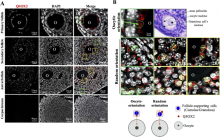
Mar, 2024
Background: Quiescin sulfhydryl oxidase 2 (QSOX2) is a flavin adenine dinucleotide-dependent sulfhydryl oxidase that is known to be involved in protein folding, cell growth regulation, and redox state modification through oxidative activities. Earlier studies demonstrated the tissue and cellular localization of QSOX2 in the male reproductive tract, as well as the highly-regulated mechanism of QSOX2 protein synthesis and expression through the coordinated action of testosterone and epididymal-enriched amino acid, glutamate. However, the presence and the functions of QSOX2 in female reproduction are unknown. In this study, we applied the Cre-loxP gene manipulation system to generate the heterozygous and homozygous Qsox2 knockout mice and examined its effects on ovarian function.
Results:...
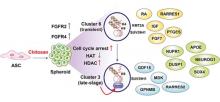
Mar, 2024
Human adipose-derived stem cells (ASCs) have shown immense potential for regenerative medicine. Our previous work demonstrated that chitosan nano-deposited surfaces induce spheroid formation and differentiation of ASCs for treating sciatic nerve injuries. However, the underlying cell fate and differentiation mechanisms of ASC-derived spheroids remain unknown. Here, we investigate the epigenetic regulation and signaling coordination of these therapeutic spheroids. During spheroid formation, we observed significant increases in histone 3 trimethylation at lysine 4 (H3K4me3), lysine 9 (H3K9me3), and lysine 27 (H3K27me3), accompanied by increased histone deacetylase (HDAC) activities and decreased histone acetyltransferase activities. Additionally, HDAC5 translocated from the cytoplasm to the...